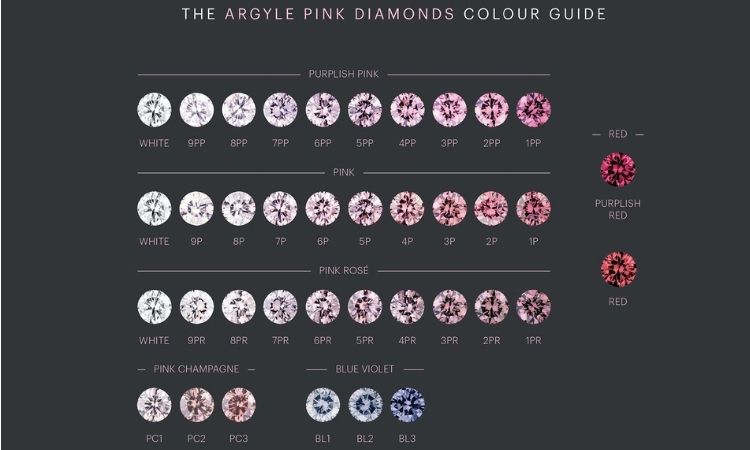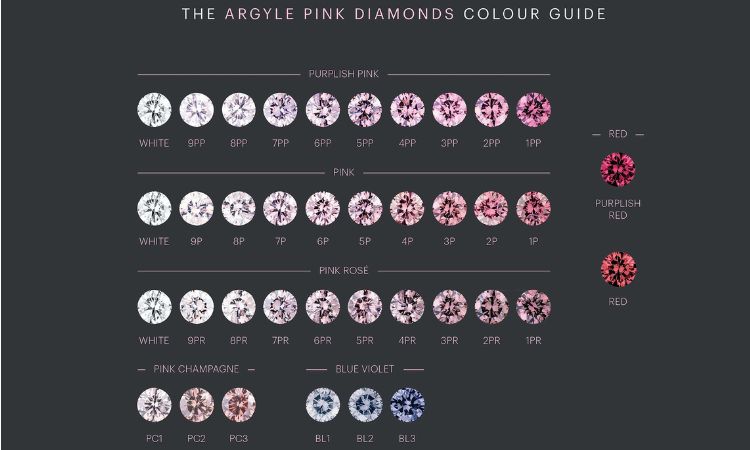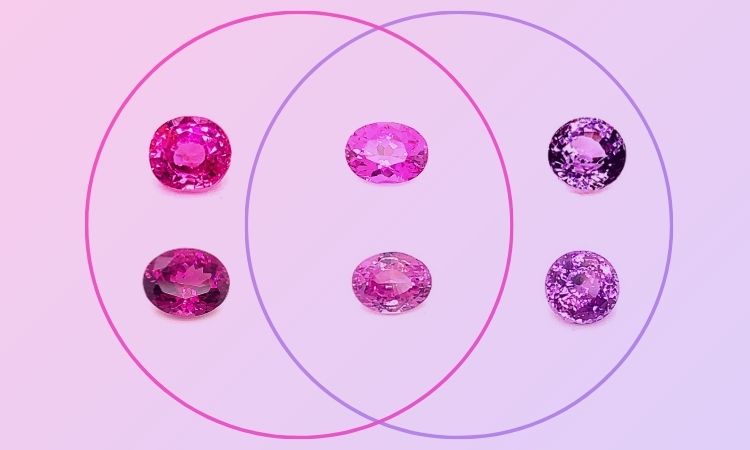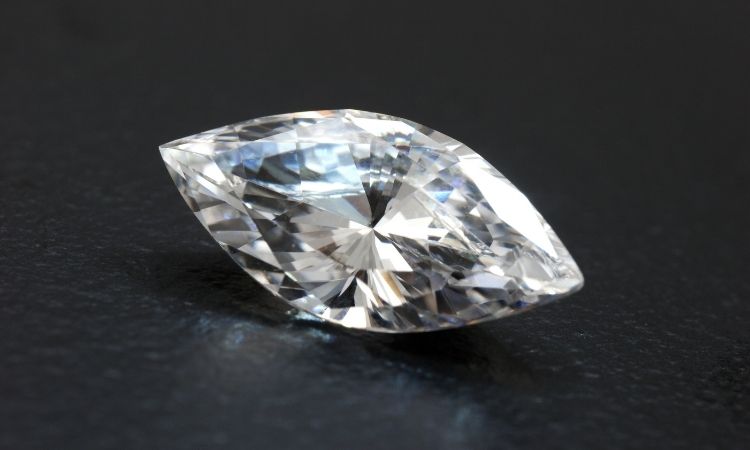Ruby vs Pink Sapphire: How to Tell the Difference
How to Tell the Difference Between Ruby and Pink Sapphire
Rubies and pink sapphires are both stunning gemstones that have captivated jewelry lovers for centuries. Their vibrant colors and remarkable durability make them popular choices for rings, earrings, and other fine jewelry. However, distinguishing between a ruby and a pink sapphire can be surprisingly tricky—even for seasoned gem enthusiasts. In this guide, we’ll explain how to tell the difference between ruby and pink sapphire, explore what makes each gemstone unique, and offer tips for choosing the perfect stone.
Understanding Corundum: The Foundation of Rubies and Sapphires
Both rubies and sapphires belong to the same mineral family: corundum. The only difference between them is their color:
- Ruby: Red corundum
- Sapphire: All other colors of gem-quality corundum, including blue, yellow, green, and pink
This means that, chemically and structurally, ruby and pink sapphire are essentially the same mineral. The distinction comes down to hue and the presence of trace elements—primarily chromium, which creates red and pink tones in corundum.
Ruby vs Pink Sapphire: The Key Difference Is Color
The main difference between a ruby and a pink sapphire is the dominant color of the stone. According to the Gemological Institute of America (GIA):
- Ruby is defined as corundum with red as the dominant hue.
- Pink sapphire is any non-red corundum where pink is the dominant hue.
However, this distinction is not always straightforward. The perception of color is subjective and can vary based on lighting, personal interpretation, and even regional or industry standards. In fact, some gemological laboratories may classify borderline stones differently.
Chromium Content and Color Intensity
The amount of chromium in a stone affects its hue:
- Higher chromium = more intense red (ruby)
- Lower chromium = lighter, pinker color (pink sapphire)
Exploring the Color Spectrum: Ruby and Pink Sapphire
The boundaries between ruby and pink sapphire can be subtle. Here’s what to look for:
- Ruby: Dominant pure red, sometimes with secondary hues of purple or orange but always unmistakably red.
- Pink Sapphire: Dominantly pink, ranging from baby pink to hot pink. Any corundum not red enough to be called ruby is classified as pink sapphire.
Gemologists use standardized color grading systems, but the final call can still be subjective. In some countries, stones with even a hint of pink are considered rubies, while others require a much deeper, pure red hue.
The Most Sought-After Ruby: "Pigeon’s Blood"
The most valuable rubies are those with a pure, vibrant red color—commonly described as pigeon’s blood. This shade is highly prized for its rich, slightly bluish-red appearance without orange or brown undertones. Burmese rubies are famous for this exceptional color and are often considered the gold standard in the ruby world.
Pink Sapphires: Beauty in Every Shade
Pink sapphires come in a wide range of shades, from soft pastels to intense hot pinks. Some pink sapphires are heat-treated or otherwise enhanced to achieve more vivid hues. Lab-created pink sapphires, which tend to be lighter and more uniform in color, are also gaining popularity.
Why the Confusion? Subjectivity in Classification
One of the biggest challenges in telling the difference between ruby and pink sapphire is that there is no universal, absolute standard. The GIA and other leading gemological laboratories agree that red must be the dominant hue for a stone to be classified as a ruby. However, the threshold for what constitutes "red" as opposed to "pink" is still open to interpretation. This ambiguity can affect how stones are marketed and valued.
Regional Differences
- In some Asian markets, stones with a strong pinkish-red color are still sold as rubies.
- In Western markets, gem labs are stricter about classifying only truly red stones as rubies.
How to Distinguish Ruby from Pink Sapphire: Practical Steps
If you’re shopping for a gemstone or evaluating a stone you already own, here’s how you can tell the difference between a ruby and a pink sapphire:
1. Examine the Color
- Red Hue: If red is clearly dominant, you’re likely looking at a ruby.
- Pink Hue: If the stone is distinctly pink, it’s a pink sapphire.
2. Check for Secondary Hues
- Purple or Orange Undertones: Rubies may have subtle secondary hues, but red should always be dominant.
- Purple or Violet Tones: These are more common in pink sapphires.
3. Consider the Source
- Burmese rubies are highly valued for their pigeon’s blood red color.
- Pink sapphires are mined in places like Sri Lanka and Madagascar, as well as created in labs.
4. Get a Gemological Certificate
The most reliable way to distinguish between ruby and pink sapphire is to obtain a certificate from a reputable gemological laboratory. A GIA or similar report will indicate whether the stone is classified as a ruby or a pink sapphire, based on industry standards. This is especially important for high-value purchases.
Other Factors Affecting Value and Classification
- Color Saturation: More saturated, pure colors are more valuable.
- Treatments: Some pink sapphires are treated to intensify their color. Natural, untreated stones are rarer and often more valuable.
- Clarity: Both rubies and sapphires may have inclusions, but eye-clean stones are highly prized.
- Origin: Stones from prestigious sources (like Burma for ruby) may command higher prices.
Lab-Grown vs Natural Stones
Lab-created rubies and sapphires are chemically identical to their natural counterparts. Lab-created pink sapphires tend to have lighter, more uniform coloring and fewer inclusions. While these stones are more affordable, they lack the rarity and value of natural, untreated gems.
Choosing Between Ruby and Pink Sapphire
When selecting a gemstone, consider the following:
- Personal Preference: The difference between ruby and pink sapphire is largely a matter of color. Choose the shade you love most.
- Budget: High-quality, untreated rubies—especially pigeon’s blood red—are among the most expensive colored gemstones. Pink sapphires often offer a more affordable alternative with equally stunning looks.
- Certification: Always seek certification from a trusted gem lab, especially for significant purchases.
- Treatments and Origin: Ask about any treatments and the stone’s origin, as these can affect both value and appearance.
- Natural vs Lab-Grown: Decide if you prefer the rarity of natural stones or the affordability and perfection of lab-created options.
Expert Tips for Buyers
- When in doubt, consult with a certified gemologist or appraiser.
- Request a gemstone grading report (such as from GIA or AGS) for clarity on classification and value.
- Be cautious of stones described as "pink ruby"—this is a marketing term and may be used interchangeably with pink sapphire.
- Always verify whether the stone is natural or treated, as this impacts price and collectability.
- Remember: The best stone for you is one that suits your taste and budget, regardless of whether it’s labeled ruby or pink sapphire.
Frequently Asked Questions
Can a ruby have pink tones?
Yes, some rubies may show pinkish or purplish secondary hues, but red must always be the dominant color for a stone to be classified as a ruby.
Is pink sapphire rarer than ruby?
Fine-quality rubies are generally rarer and more valuable than pink sapphires, especially those with pigeon’s blood red color. However, some exceptional pink sapphires can also be quite rare and valuable.
Are treated pink sapphires less valuable?
Yes, natural, untreated pink sapphires typically command higher prices than treated stones. Always ask for full disclosure of any treatments.
Visual Guide: Pink Sapphire and Ruby Color Grading
Color plays a crucial role in gemstone value and classification. While the above images showcase the color grading for pink diamonds, similar principles apply to rubies and pink sapphires. The gradation from pale pink to vivid, saturated hues illustrates the spectrum found in these gemstones.

pink diamond colour grading

the argyle pink diamonds colour guide
Conclusion: Trust Your Eyes and Rely on Certification
Distinguishing between ruby and pink sapphire ultimately comes down to color—specifically, whether red or pink is the dominant hue. While this may sound simple, the reality is that color grading is subjective and standards can vary. The safest way to determine a gemstone’s classification is to consult with a professional gemologist and obtain a certificate from a respected laboratory.
Whether you’re drawn to the deep, passionate red of a ruby or the playful, romantic tones of a pink sapphire, both gems offer timeless beauty and lasting value. Choose the stone that speaks to you, and don’t hesitate to seek expert advice to ensure your investment is genuine and accurately represented.






Comments (0)
Write your review